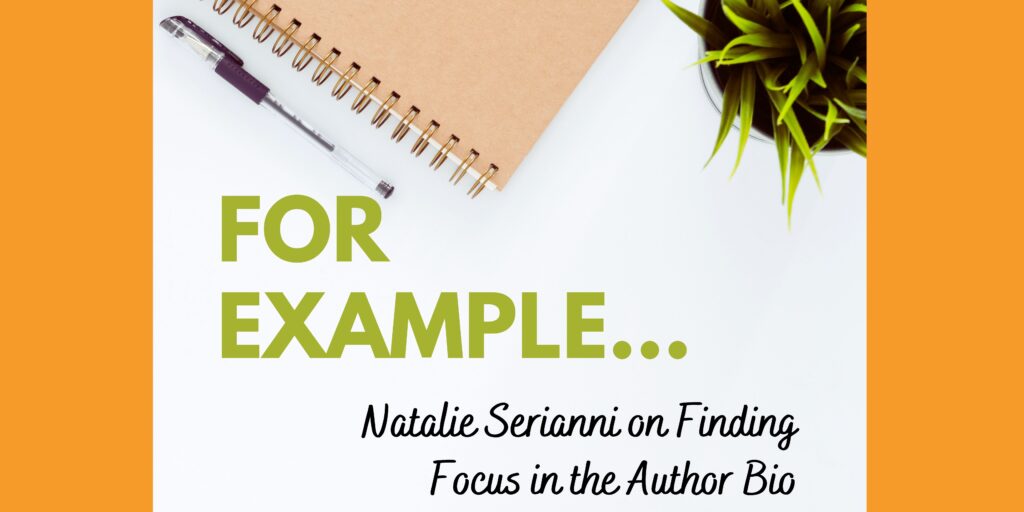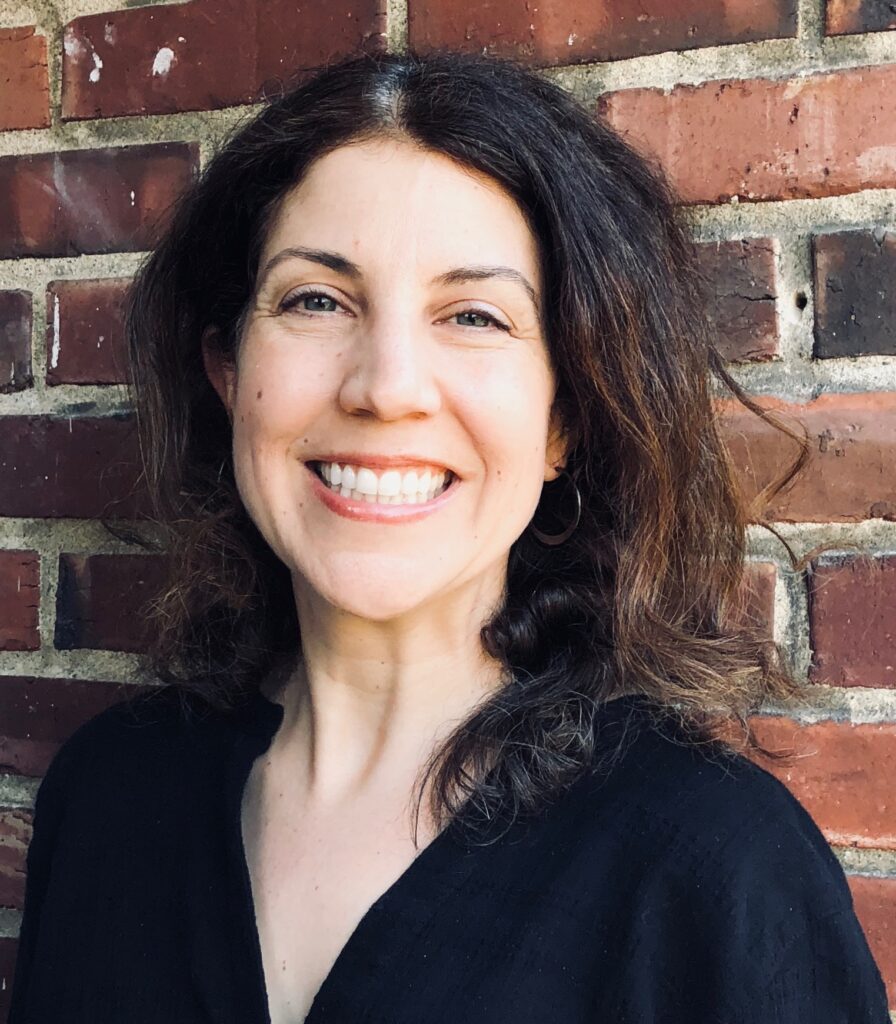For Example… Natalie Serianni on Finding Focus in the Author Bio

A note about the series: “For Example…” is a series of blog posts intended to teach readers about one particular aspect of writing. Each week, a published writer will guest post about a topic of their choosing and use only their own work as the examples for their post. If you would like to be included in this series, please contact Kelly Ann Jacobson via this site or social media.
Ahhh, the author’s bio. I always thought it an afterthought, you know, something to think about only after you’ve written your essay. It’s supposed to say something about you as a writer: who you are, where you’re from, things you love (or hate), and what you’ve written. Bios can be thoughtful, original, creative, and funny. Among its important functions, it leads the reader to better understand an author’s background, their previously published work and ways to connect with them on social media. It’s an art, too – creating within constraints. Working in this condensed space, the author’s bio is designed to showcase your writing package. But did you know it could also help you better navigate your writing path forward? Crafting an author’s bio can be a powerful exercise of writing self-evaluation, and an easy way to get clear on your writing focus.
A few months ago, I had an article published at a parenting publication and was grateful to share my story of motherless mothering, finding food happiness and learning to get close to what I love. I enjoyed connecting with others who’ve had similar experiences with mother loss.
Weeks before that, the editor was in touch through email about the process towards publication. They shared that before beginning edits, I was to send a 1–2-line author bio that did not include publications, instead relating to ideas explored in my piece.
Wait a second. I thought the author bio was a place to share what you’ve published? Aren’t people most interested in our background and publications? I never thought about what I was currently doing, only what I had done.
At a loss, I labored over this new “assignment” for two days. I had an author bio handy but it was a list of publication titles, which said something about me and my work, sure, but perhaps not everything. This request brought me back to a pre-recorded Hedgebrook class with T Kira Madden, “The Storying of Self,” where she says that writing is not about finding answers but finding your questions. The questions we chase. As I listened to the video, I jotted down a couple of concrete questions, specific to my experience. What she calls our “obsessions.”
I thought about what I was attempting when I wrote essays. What do I write about? I wondered. In a list, I came up with three solid, specific, “captivations” that drive my work, each time I sit down at my computer; what I lunge at each time I have a keyboard under my fingers. It’s gotten me to drill down to this question: without my mother, why am I unable to do certain things? Naming this specific question and writing from curiosity gave me space not to solve, or find answers, but to push forward in my pursuits. This question provided a path. And while my question might be personal, it’s a universal inquiry into how grief limits us after we lose what we love.
In the College Composition courses I teach, we look at claims and thesis statements as an inroad into our topics. Questions that often help students: What am I trying to say? What am I writing about? What is important that the reader know? Why is it important? And my favorite, so what? helps student writers further consider their audience and purpose. Workshopping thesis statements on a white board, or in a Zoom room, or in an author bio is an exercise in precision; it allows us to get to the bottom of “what am I doing” when we sit down to write.
For a while, the publications and pieces I’ve written (and listed in my author’s bio) defined me. As writers, I think we can change our route as we go. Giving ourselves permission to focus on our current obsessions and explorations, not just what we’ve written about before, can allow us to change course and move ahead in our musings.
I’m grateful for the very specific, direct writing prompt to reimagine my author bio. It was an opportunity to reframe my focus, showing me that my way into a subject is always shifting. This helpful reflective exercise forced me to distill – to my reader, and to myself – my current writing priorities. I plan to revisit my author bio frequently to rewrite my way forward.
I’ll include my recent bio below, so you can see. Just note – it will change soon.
Author Bio: Natalie Serianni is a Seattle-based writer, instructor, and mother of two. Her work has appeared in Motherwell, The Manifest-Station, SheKnows, Today’s Parent, Ruminate Magazine, and others. She’s at work on a memoir about motherless motherhood, fractured living, and the difficulty of letting go of our mothers while seeing them in everything. Connect with her on and .

Love that “it’s an art, too. Creating within constraints.” Great post!